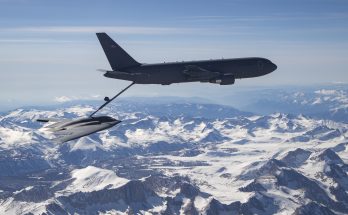by Matthew Beres, Airborne Retrofit & Modernization Analyst, Forecast International.
The standoff between China and India on the Doklam plateau hasn’t quite exploded onto the international headlines, but the situation nevertheless has great implications. These are the largest nations in Asia, and the two countries have growing – and competing – economies. Aside from Russia, India is the last remaining Asian deterrent against Chinese territorial expansion in Asia.
In any near-future conflict with China, India will be at a serious air power disadvantage, owing primarily to the low operational availability of its aging and dwindling fleets.
The MiG-27 fleet will be retired in 2020, and the MiG-21 fleet will be retired in 2025.
The Jaguar DARIN III upgrade is progressing at a snail’s pace, and has just this year reached Initial Operational Capability (IOC). And Honeywell has only recently been chosen as the platform’s re-engining supplier.
Su-30MKI BrahMos missile upgrades will allow India to hit targets 3,300 kilometers inside China, but only two aircraft have thus far been upgraded.
A Sukhoi T-50 FGFA order is yet to be finalized, and the Rafale order is down significantly from original numbers.
The over 30-year-old Tejas light combat aircraft program has seen increased orders, despite known design flaws. The Indian Air Force has inducted 40 IOC-configured Tejas aircraft that have engine thrust, aircraft weight, fuel capacity, and pilot protection flaws.
Due to the delayed entrance of new-build fighters and the poor operational readiness of its current fleet, India will, for the foreseeable future, face a serious air superiority disadvantage in a conflict with China. This will especially be important in the remote Doklam region, where air superiority may be more important than the strength of ground forces.
Forecast International’s Airborne Retrofit & Modernization Forecast provides operators in the military and commercial aviation sectors with the information they need to maximize their current investments rather than expand their fleets, a trend that is opening up multiple opportunities for the expansion of retrofit and modernization programs. It offers a one-stop service for tracking the status of commercial and military R&M programs in progress worldwide, and pinpoints key developments in the aviation industry that will impact the market in the future.

For 50 years, Forecast International intelligence reports have been the aerospace and defense industry standard for accurate research, analysis, and projections. Our experienced analysts compile, evaluate, and present accurate data for decision makers. FI's market research reports offer concise analysis of individual programs and identify market opportunities. Each report includes a program overview, detailed statistics, recent developments and a competitive analysis, culminating in production forecasts spanning 10 or 15 years. Let our market intelligence reports be a key part of reducing uncertainties and mastering your specific market and its growth potential. Find out more at www.forecastinternational.com



